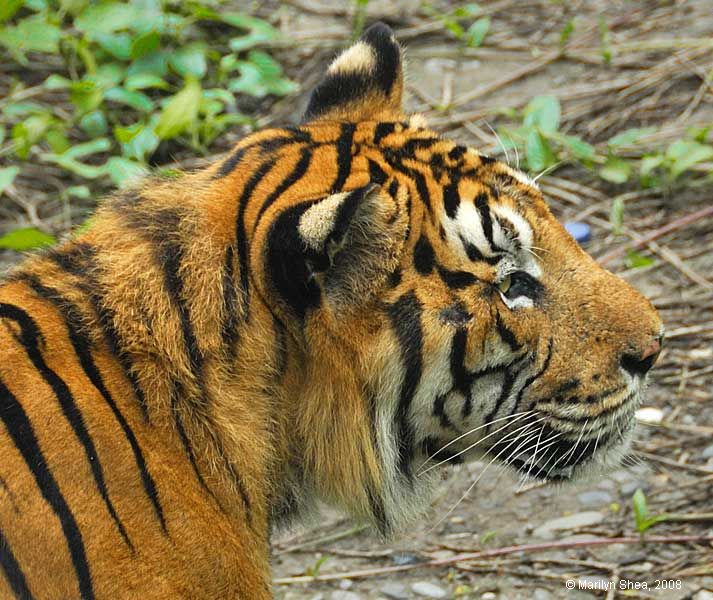 |
| The tiger 老虎 (lǎohǔ) vies with the lion in importance and regality. In China today, both are described as the king of the forest, king of the beasts. The tiger symbol predates the lion symbol by thousands of years. While there are no indigenous lions in China, there were species of native tigers. We have seen that the White Tiger constellation was a part of folklore and astronomy back into the Neolithic era. The orange tigers also had their place in the stories and myths of China. When found alone, without the images of the three other constellations, it is assumed that the depiction is of an orange tiger.
One of the unfortunate aspects of being a symbol of power, protection, and fertility is that the source of those beliefs is superstition. Those same superstitions continue to persist in ignorant and fearful people who then endanger the existence of the tiger. Ancient beliefs developed about the ability of various animal parts to cure illness or act as an aphrodisiac. Logic seldom trumps stupidity and people who fear for their lives will pay anything to try anything to prolong it. Poachers are the greatest threat to the tiger, even more than loss of habitat. The tiger has been hunted to extinction in many areas of China and Southeast Asia. As traditional Chinese medicine tries to shake its image of being based on shamanistic religious superstition, the pressure on many species should abate. |
http://hua.umf.maine.edu/China/beijing4.html
Last
update: November 2009
© Marilyn Shea, 2009